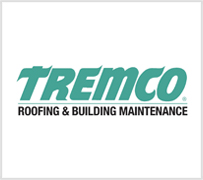
Home / News / Leaks Not Caused by Faulty Roofing

As professional roofers, we get called out any time there is a leaky roof. Surprisingly, only about 20% of leaks are actually caused by a problem with the roofing material itself. In fact, most of the problems actually come from the equipment sitting on the roof and from the people who install it.
For both commercial and residential property, especially in the southwest, the roof is the preferred choice for HVAC equipment. Since part of the cooling process is to condense and remove moisture from the air, if the pipe which drains the moisture isn’t hooked up properly you get leaks. Home and business owners may find that water inside their properties or dripping from the eaves is actually an HVAC problem rather than a faulty roof.
Plumbing and electrical equipment are also commonly placed on rooftops — especially commercial and industrial properties. HVAC, plumbing and electrical equipment itself may not be waterproof, and in the case that it is, it will eventually wear out. Thus roof leaks may actually be water filtering in through the equipment rather than through the roofing materials.
Yet another source of leaks are skylights. Unless properly installed, these slices of clear blue sky can also become torrents during a storm.
Finally, the installers of rooftop equipment aren’t always professional roofers (usually not) and don’t understand the damage they may be causing simply by walking on delicate materials. We wince when we think of how much damage they cause by banging around equipment, dropping sharp tools and stomping all over the roof with huge clunky boots. Faulty and careless installation can cause leaks even on the newest equipment (and windows). The unprofessional “professionals” can be a worst nightmare, and they certainly don’t make our jobs any easier. As always, it’s highly recommended to check a few references before hiring anyone to install or maintain equipment located on a roof.
Unfortunately, the problems described above are usually compounded if the roof hasn’t been maintained. Just about every roof should have an inspection at least annually. Prompt repair of damage will ensure small issues don’t grow into large problems, and will also provide for spotting equipment that may be in need of repair before it causes any trouble.











